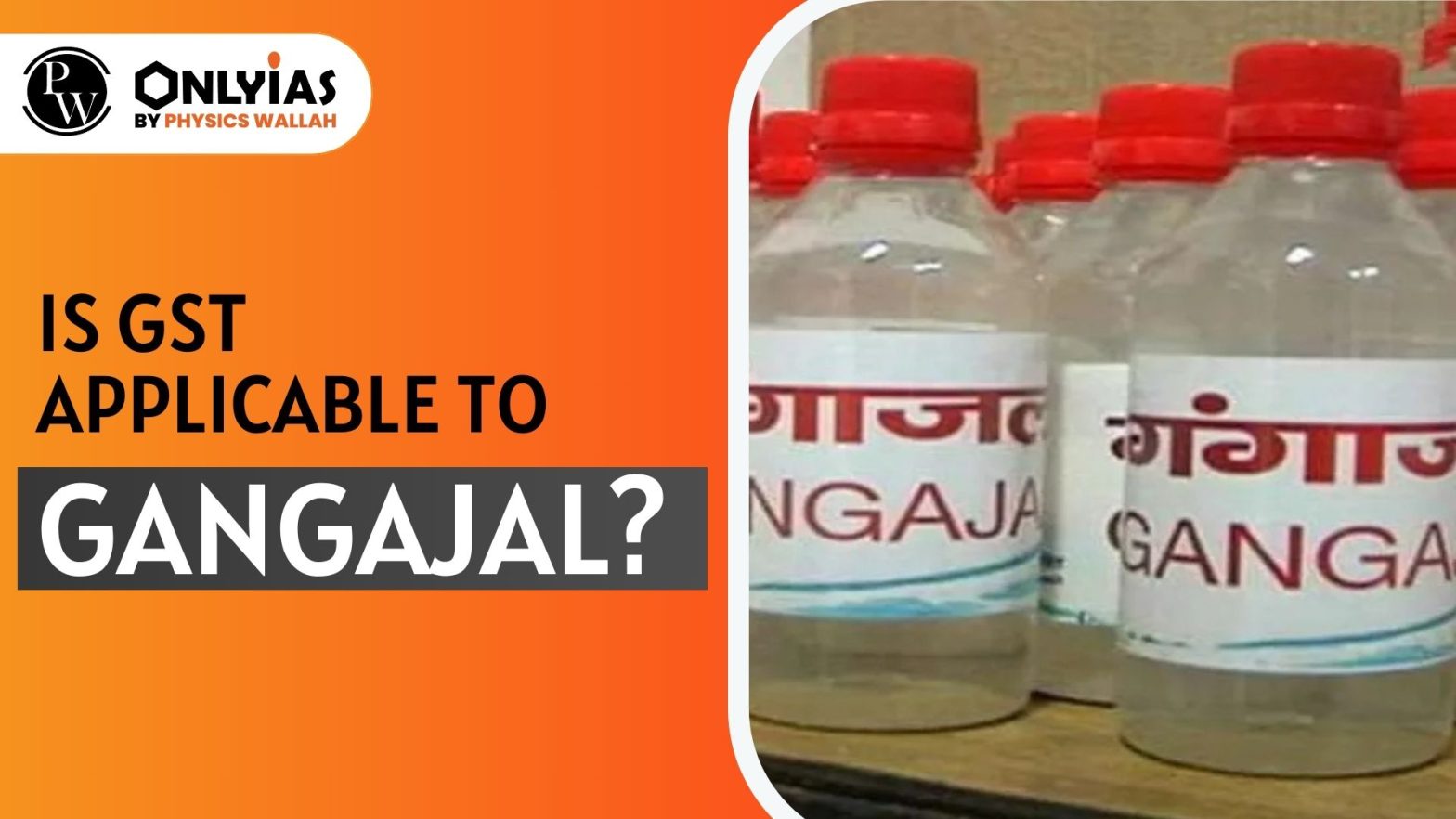Context: Recently, Central Board of Indirect Taxes and Customs (CBIC) has provided a clarification affirming that Gangajal and various other puja items are not subject to Goods and Services Tax (GST).

Context: Recently, Central Board of Indirect Taxes and Customs (CBIC) has provided a clarification affirming that Gangajal and various other puja items are not subject to Goods and Services Tax (GST).
|
|---|
| Attempt the Previous Year Prelims Question Q1. Consider the following items: (2018)
Which of the above items is/are exempted under GST (Good and Services Tax)? (a) 1 only Ans: C |
|---|
| Must Read | |
| NCERT Notes For UPSC | UPSC Daily Current Affairs |
| UPSC Blogs | UPSC Daily Editorials |
| Daily Current Affairs Quiz | Daily Main Answer Writing |
| UPSC Mains Previous Year Papers | UPSC Test Series 2024 |
Ganga water not only purifies the body & soul of millions but also gives fertile land to the country in Uttrakhand, Uttar Pradesh and Bihar. Ganga has been used as a means of Water Transport for trade and commerce. The holy water of Ganga is very useful for all human beings.
The Goods and Services Tax is a successor to VAT used in India on the supply of goods and services. GST is a digitised form of VAT where you can also track the goods & services. Both VAT and GST have the same taxation slabs
The Central Board of Indirect Taxes & Customs (CBIC) on Thursday clarified that there is no GST on 'Gangajal', used in pooja (rituals) by households across the country.
Hindus use Gangajal from birth rites to death. On the normal death of a person, Gangajal is poured into his mouth. As per religious beliefs, this destroys all sins and evil thoughts and purifies the body and mind.

<div class="new-fform">
</div>